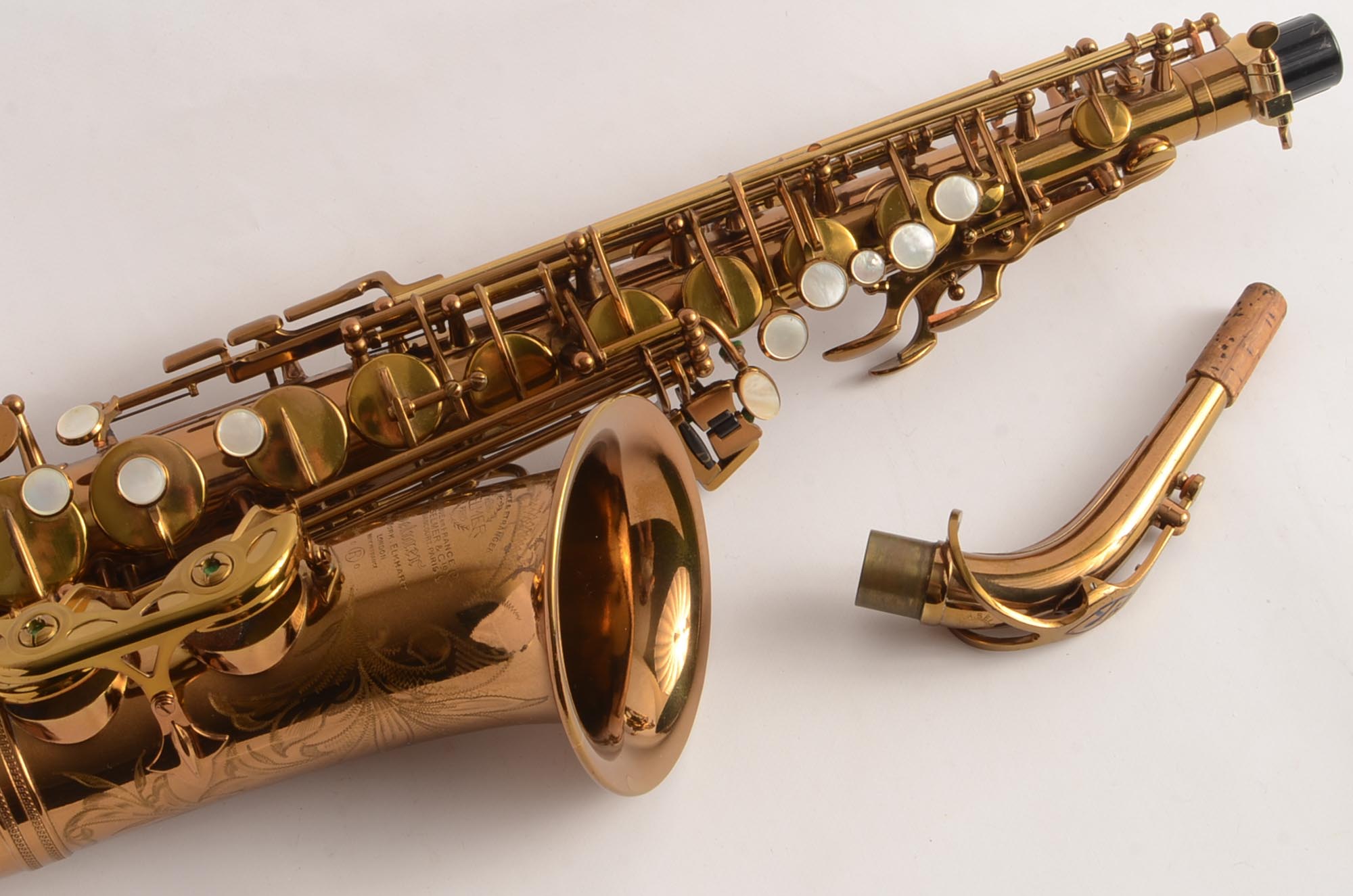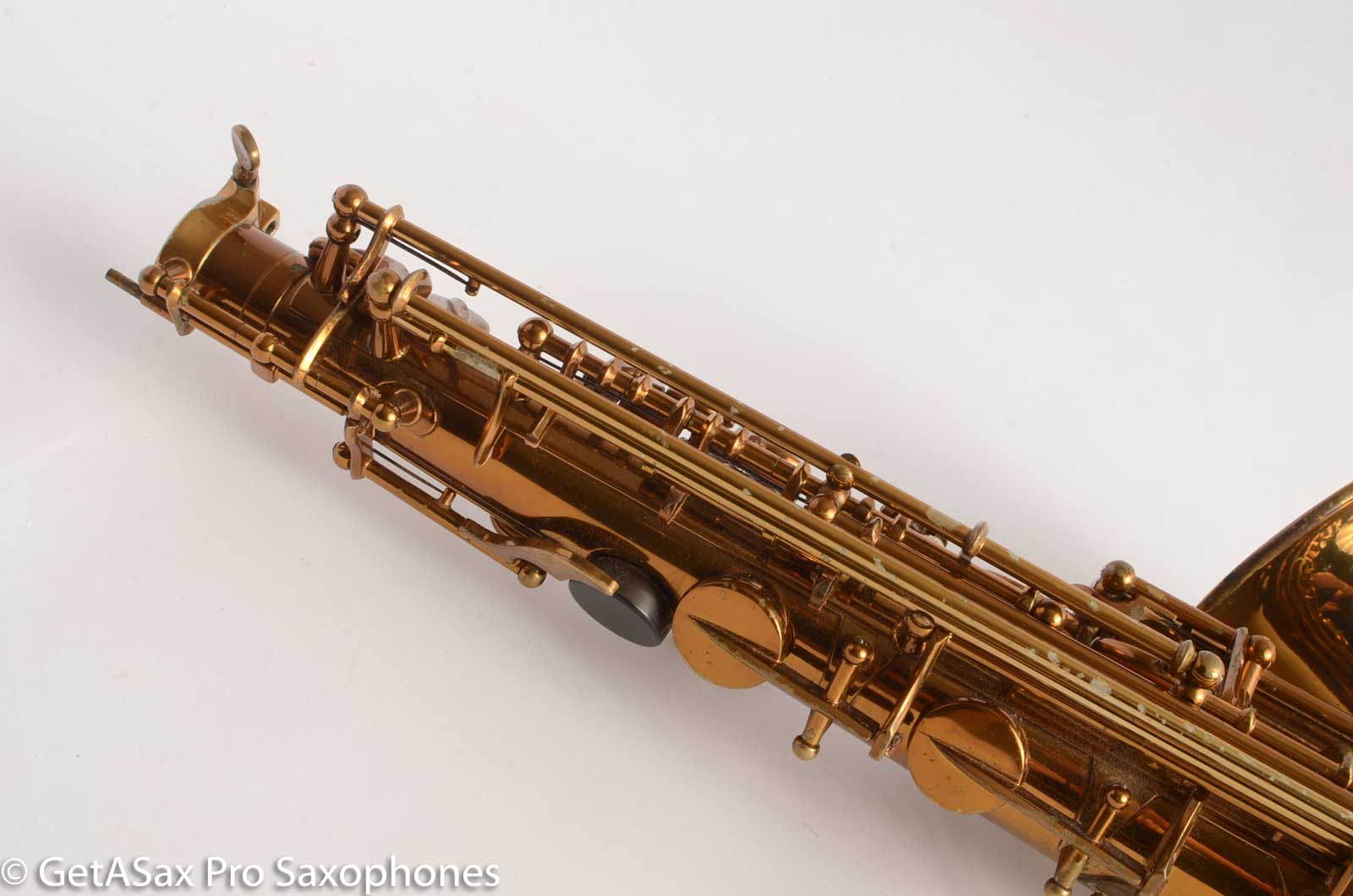

- #Selmer alto saxophone mark vi serial number#
- #Selmer alto saxophone mark vi update#
- #Selmer alto saxophone mark vi series#
This can mean that you’ll find a Mark VI with (say) a gold plate neck. Note that many companies offer non-Selmer-made custom necks. I’ve only seen a couple set-up like this, which makes me believe that any examples I’ve seen were refinished. There is a possibility that you could get a two-tone silver plate body and gold plate keywork, or vice-versa. If you really wonder if you have a gold plated horn, look for patches of silver on your horn: gold does not bond to brass, so they first electroplate the horn silver. Gold plate is easier to recognize in person than it is from pictures, unless you’re a semi-pro at taking instrument pictures, because the horn will often look very silver or lacquer-y. The way to tell nickel from silver is if there’s any black or purple tarnish. Chances are that you don’t have this finish, even though, since I discovered this finish choice, dozens of other folks have come forward claiming their horn has this finish choice. It’s odd that, considering most student horns from about 1960 on have this “two-tone” finish. Several French manufacturers offered this finish as a “step up” from the standard lacquer.
#Selmer alto saxophone mark vi serial number#
The question is going to be, “How do I know if I have an American horn?” This is fairly easy: the American-made horns have a serial number inside the neck, matching the one on the body of the horn. Today, Selmer-Paris instruments have the same lacquer, engraving and high standard of finish throughout the world ( ref).

Only horns for the US market followed this process balancing out a supply chain shortage in the French factory during the post- period.įrom the Mark VII onwards (1973), all saxophones have been delivered 100% finished by Selmer-Paris at the Mantes factory. The American lacquer was darker red than the clear lacquer used in the French factory. Padding, lacquering, engraving and finishing was done in the Elkhart plant. Up to the Mark VI, instruments were shipped unfinished to Selmer USA (now Conn-Selmer, a division of Steinway Musical Instruments). In other words, if you come across a Mark VI that looks like it’s been “painted,” don’t think it’s not original and get out your lacquer stripper. Two other colors I’ve heard of are red (“rose”) and blue. Selmer was one of the first manufacturers to introduce colored lacquers for their horns, albeit for a relatively brief time. It’s much better.” “No, you want one with two. I also suggest, on the Woodwind Forum that the “Church of the Supremacy of the 5-digit Serial Number” (see “Legend of the Legendary Legends”) now has another thing that they can argue about: “Hey, my Mark VI has THREE patents stamped.” “Mine has four. If you look on the Mark VI, stamped below the right-hand tumbrest can be several patent numbers - and no, it doesn’t matter what serial number the horn is.

#Selmer alto saxophone mark vi series#
The VI is called such because it was the sixth saxophone “series” produced by Selmer: Modele 22, Modele 26 series (includes New Largebore and Modele 28), Selmer Super Sax (includes the Radio Improved and Jimmy Dorsey), Balanced Action, Super (Balanced) Action, Mark VI.
#Selmer alto saxophone mark vi update#
In other words, I’m going to update this article a few times and add pictures and other goodies. First, a little note: there is so much to write about on the VI, that I’m breaking stuff down and trying to get a section of stuff ready at a time.


 0 kommentar(er)
0 kommentar(er)
